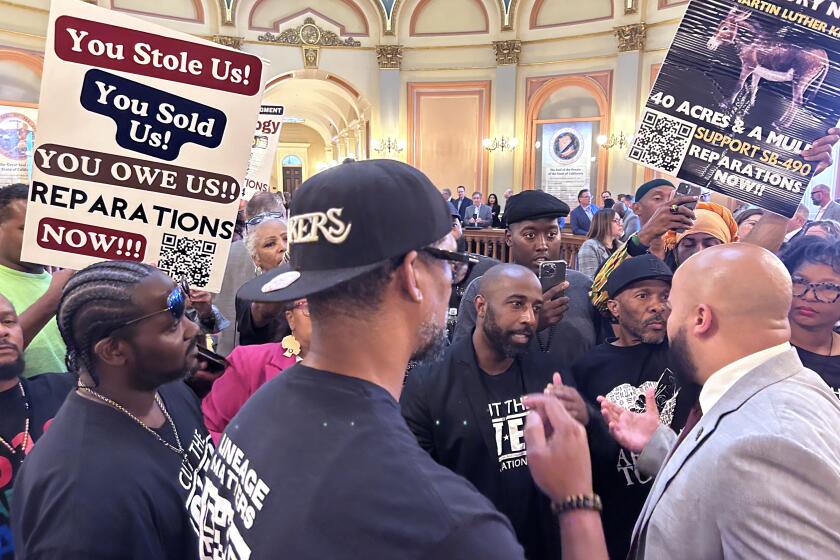State Panel Gives OK to Downtown Prison Over Eastside Protests
- Share via
Despite the objections of Eastside residents and activists, a three-member state panel Thursday approved an environmental impact report for a proposed 1,450-bed state prison in the southeast corner of downtown Los Angeles.
The 2-1 vote by the EIR certification panel of the state Department of Corrections was the last major administrative hurdle in the 4 1/2-year struggle to put the controversial facility on a 20-acre site just west of the concrete-paved Los Angeles River. Construction could begin as early as summer.
But opponents, who contend the prison would pose a threat to predominantly Latino communities east of the river, vowed to go to court to stop the $139-million project. A legal challenge could delay the project several more years, state officials acknowledged.
“The fat lady hasn’t sung yet,” said Father John Moretta of the Mothers of East L.A., a grass-roots group that opposes the prison.
Los Angeles Democratic Assemblywoman Lucille Roybal-Allard, in whose district the prison would be built, said: “Here’s another project that we don’t need. I get madder the more I think about it.”
Bitter debate has dogged the issue since Gov. George Deukmejian, responding to complaints that Los Angeles County contributes about 40% of the state’s prison inmates but is home to no state prison, proposed a medium-security facility for an industrial lot near 12th Street and Santa Fe Avenue in 1985.
Latino politicians, led by state Sen. Art Torres (D-Los Angeles), immediately criticized the location, arguing that Boyle Heights and other Eastside communities were close to five other penal institutions and have been the “dumping ground” for other unwanted public projects.
To mollify critics in the Democratic-controlled Legislature, Deukmejian supported a Senate bill authorizing construction of two prisons in the county--one in the downtown area and the other in mostly rural Lancaster. It swiftly became law, but that did little to quiet Eastside prison opponents.
An initial environmental impact report on the proposed downtown prison was rejected in March by the state review panel, which asked for more analysis on property values near the site.
The report was augmented to answer the panel’s concerns, but debate this week again focused on arguments that the Eastside already has too many jails. At the daylong hearing Wednesday, more than 20 speakers asked the panel to reject the planned prison.
Jennifer Giron, an eighth-grader at a Roman Catholic elementary school in Boyle Heights, told of her fear at seeing armed sheriff’s deputies appearing on campus about four years ago to look for an escapee from nearby County Jail.
“If you were to live in this community,” she said, “you would be scared, too. Why is it that this community always gets the negative things, like the prisons?”
Panel member David E. Bess, a professor of urban planning at Cal Poly Pomona who cast the deciding vote to certify the report, said he personally opposed the prison site, but reluctantly concluded that the river was a sufficient buffer zone.
“It’s a terribly compelling argument,” he said of statements like Giron’s. “(But) I wasn’t convinced that there was a threat to these children.”
Bess added that the report had sufficient information for James Rowland, the head of the Corrections Department, to make his expected decision to proceed with the prison.
Bess said the panel was “narrowly charged” with ruling on the adequacy of the environmental document and not with deciding whether the site is appropriate for a prison.
Terrence M. Eagan, the governor’s appointee on the panel, joined Bess in voting for the EIR.
Robert H. Twiss, a UC Berkeley professor of environmental planning and the panel’s chairman, voted against the report, saying it was inadequate.
More to Read
Sign up for Essential California
The most important California stories and recommendations in your inbox every morning.
You may occasionally receive promotional content from the Los Angeles Times.










